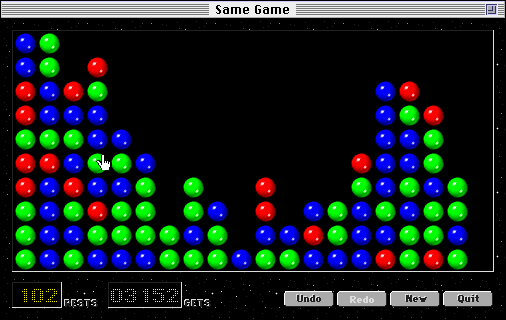|
Tile-matching Video Game
A tile-matching video game is a type of puzzle video game where the player manipulates tiles in order to make them disappear according to a matching criterion. In many tile-matching games, that criterion is to place a given number of tiles of the same type so that they adjoin each other. That number is often three, and these games are called match-three games.Juul (2009) p. 100 The core challenge of tile-matching games is the identification of patterns on a seemingly chaotic board. Their origins lie in puzzle games from the 1980s such as ''Tetris'', ''Chain Shot!'' (''SameGame'') and ''Puzznic''. Tile-matching games were made popular in the 2000s, in the form of casual games distributed or played over the Internet, notably the ''Bejeweled'' series of games. They have remained popular since, with the game '' Candy Crush Saga'' becoming the most-played game on Facebook in 2013. Tile-matching games cover a broad range of design elements, mechanics and gameplay experiences. They inclu ... [...More Info...] [...Related Items...] OR: [Wikipedia] [Google] [Baidu] |
